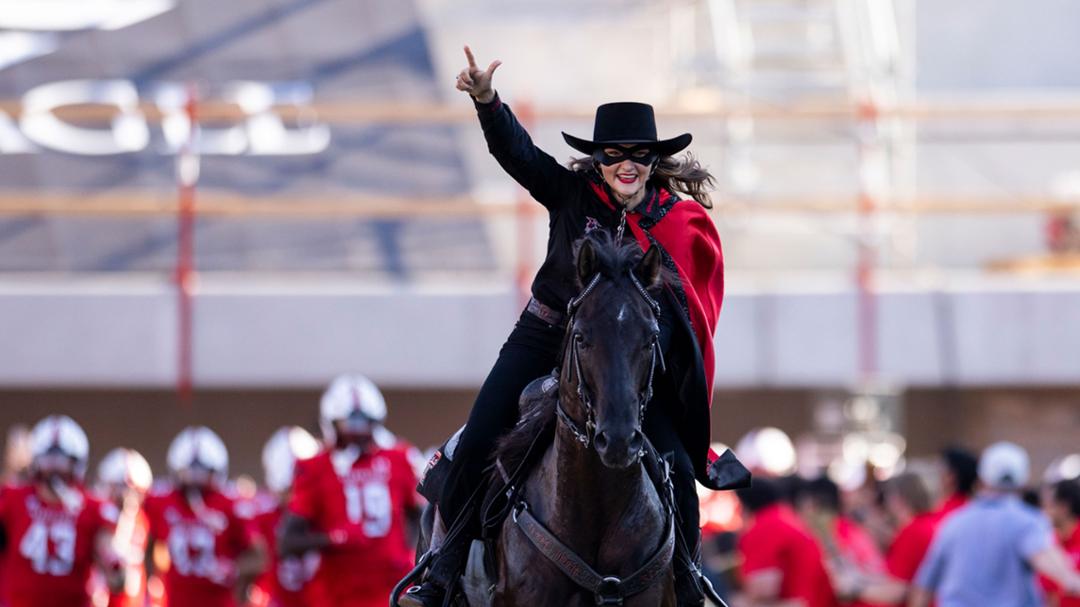The famous Texas Tech University mascot program turns 70.
Merriam-Webster defines the word legend as a story coming down from the past; especially one popularly regarded as historical although not verifiable.
There might be some debate about the verifiable part if you ask the current or previous Masked Riders at Texas Tech University.
For 70 years a rider and a horse that have not only captivated the minds and hearts of all who bear witness, but it has become one of the preeminent symbols of an entire university.
“You hear so many stories and how much these people value the position, and it really does remind you that you are part of a legacy so important to so many people,” 51st rider Ashley Winters recalled.
It may seem curious something with so much meaning had such a humble beginning. But just like the university it represents, the Masked Rider program came out of necessity, grit and what has become synonymous with the spirit of West Texas.
“I always tell incoming riders, you’re joining a very elite fraternity,” Spirit Director Stephanie Rhode said. “It is the most supportive group of individuals you can imagine. They all strive for such excellence in what they do.”
‘A dog may be man’s best friend, but the horse wrote history.’ - Unknown
While the unofficial start of the Masked Rider program began in 1937 with George Tate on a palomino, the legend, legacy and tradition officially began Jan. 1, 1954, at the Gator Bowl in Jacksonville, Florida.
The Texas Tech football team had a wildly successful season and found themselves in Florida facing off against the Auburn Tigers.
DeWitt Weaver, the Red Raider football coach from 1951 to 1960, was acutely aware his school didn’t have a mascot. Texas Tech was a member of the Border Conference, but leadership wanted to gain the attention of the Southwest Conference as a prospective member.
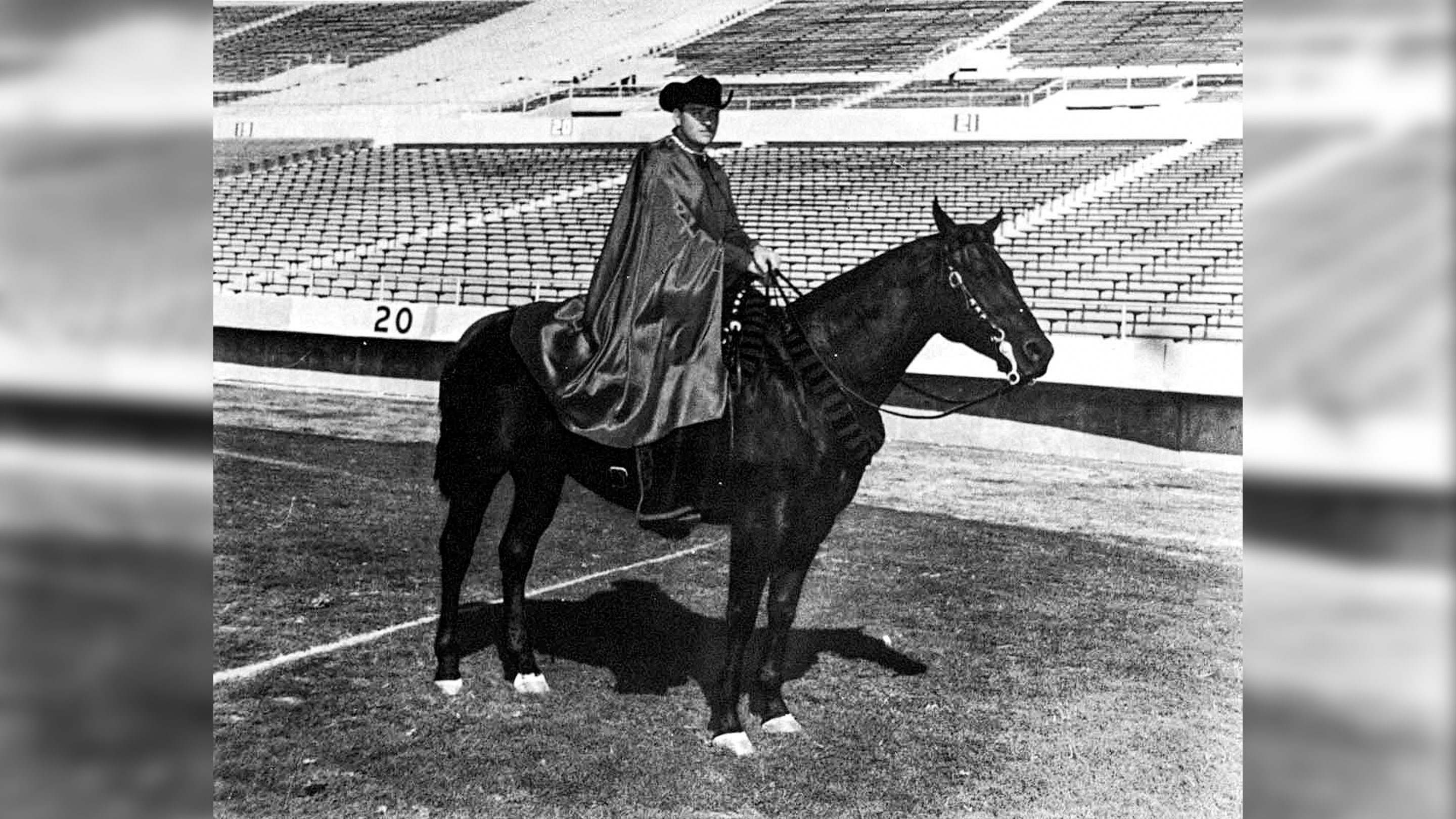
In need of a symbol, Weaver turned to student Joe Kirk Fulton in the fall of 1953 and asked him to be the first Masked Rider for the New Year’s Day game in 1954. Atop a horse named Blackie, Fulton would bring the Red Raiders onto the field, ahead of a 35-13 victory for Texas Tech.
In a 2011 interview with Texas Tech, Fulton recalled picking up the paper to read what would be one of the greatest compliments a newly created mascot could hear.
“The next morning the newspaper said it was, ‘The most exciting entrance that any team had ever made in a bowl game,’” said Fulton.
Seventy years, 13 horses and 60 riders later, Lauren Bloss took the reins of the 15th horse Centennial Champion, to lead the Red Raiders onto the field at Jones AT&T Stadium as the 62nd Masked Rider.
Bloss’s first exposure to the Masked Rider echoes many past riders. While visiting her brother with her parents, they took in a Texas Tech football game.
“The first time I heard the song play and saw her run down the field, I said ‘Oh I want to do that one day. This is pretty darn cool,” said Bloss with a smile.
Just a few years later that wish became reality.
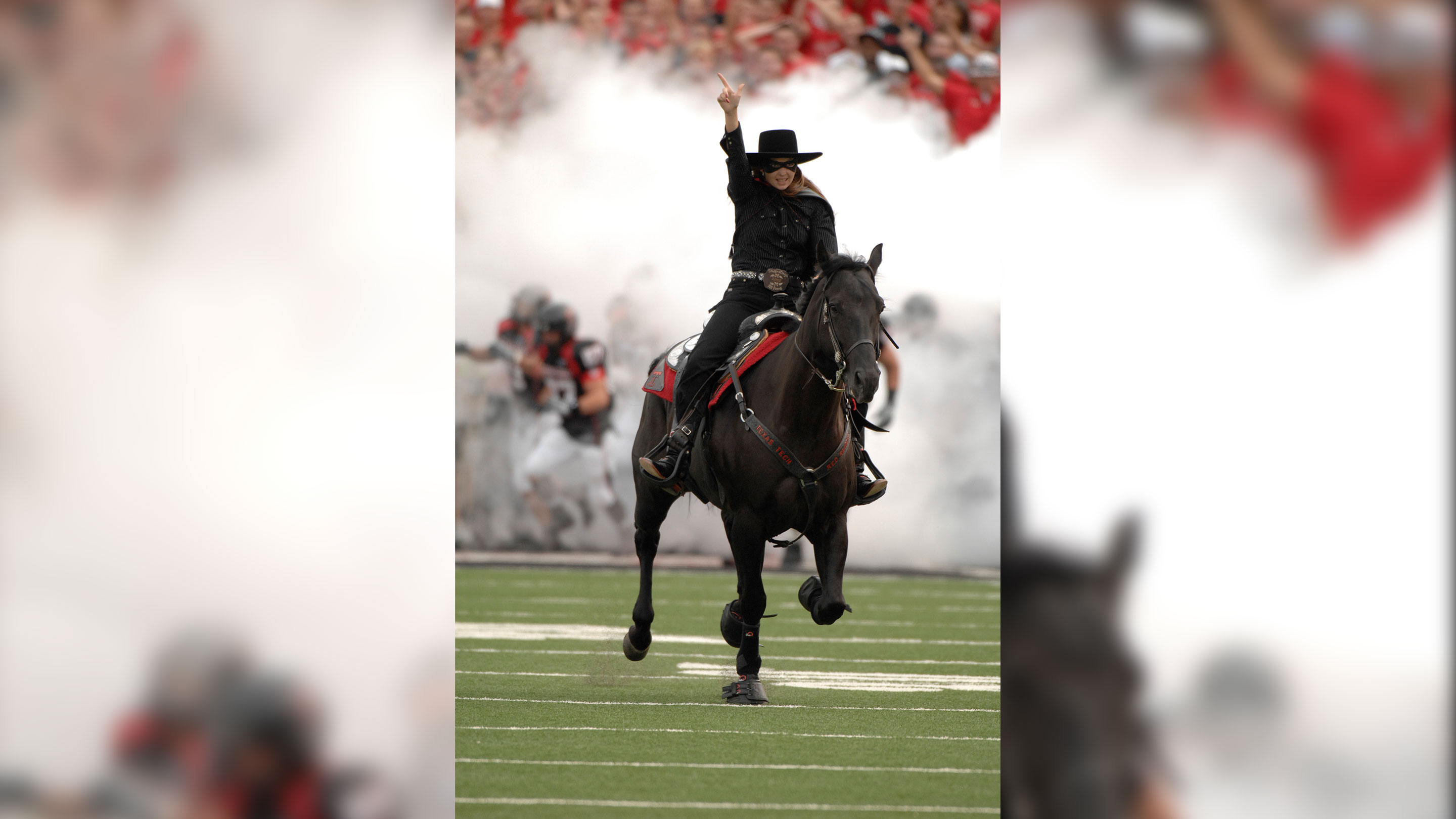
‘A great horse will change your life. The truly special ones define it.’ - Unknown
When you get a room full, yes, a room full of Masked Riders dating back to the late 1950s, the stories of trials, tribulations and triumphs are sure to be a-plenty.
In early September, the Masked Rider program celebrated its 70th year as a program by inviting riders back from the past seven decades to join in the weekend festivities. The response was by far the best the program has ever experienced as 48 riders returned to celebrate.
“To sit in a room with over 40 other riders and hear about their experiences from their year, how different they were and, in some respects, how similar they are, it’s amazing,” 43rd rider Stacy Caliva fondly recalled.
Some riders have died, and some were unable to attend. Regardless of the time they rode, the universal sentiment among the riders and program leaders was elation.
“We had riders from 1959 to 2023; 64 years of experience in one room,” Winters added. “We had a little story time and passed around the mic. Tell your favorite memory, your funniest memory. I don’t know if I was laughing or crying halfway through.
“It’s the biggest family and you keep getting family members.”
A lot has changed since those early days of Fulton racing up and down the field. Responsibilities have increased as have the resources available to the riders and the program itself.
“We had riders from rider number four all the way up to the current riders with a good distribution,” Masked Rider consultant Sam Jackson recalled.
“To hear their takes and recollections of their experience and how each one spoke about some of the significant experiences they had, it was informational because there are some of these stories that had not been told before. But there was a common theme that it was such an opportunity, such an honor.”
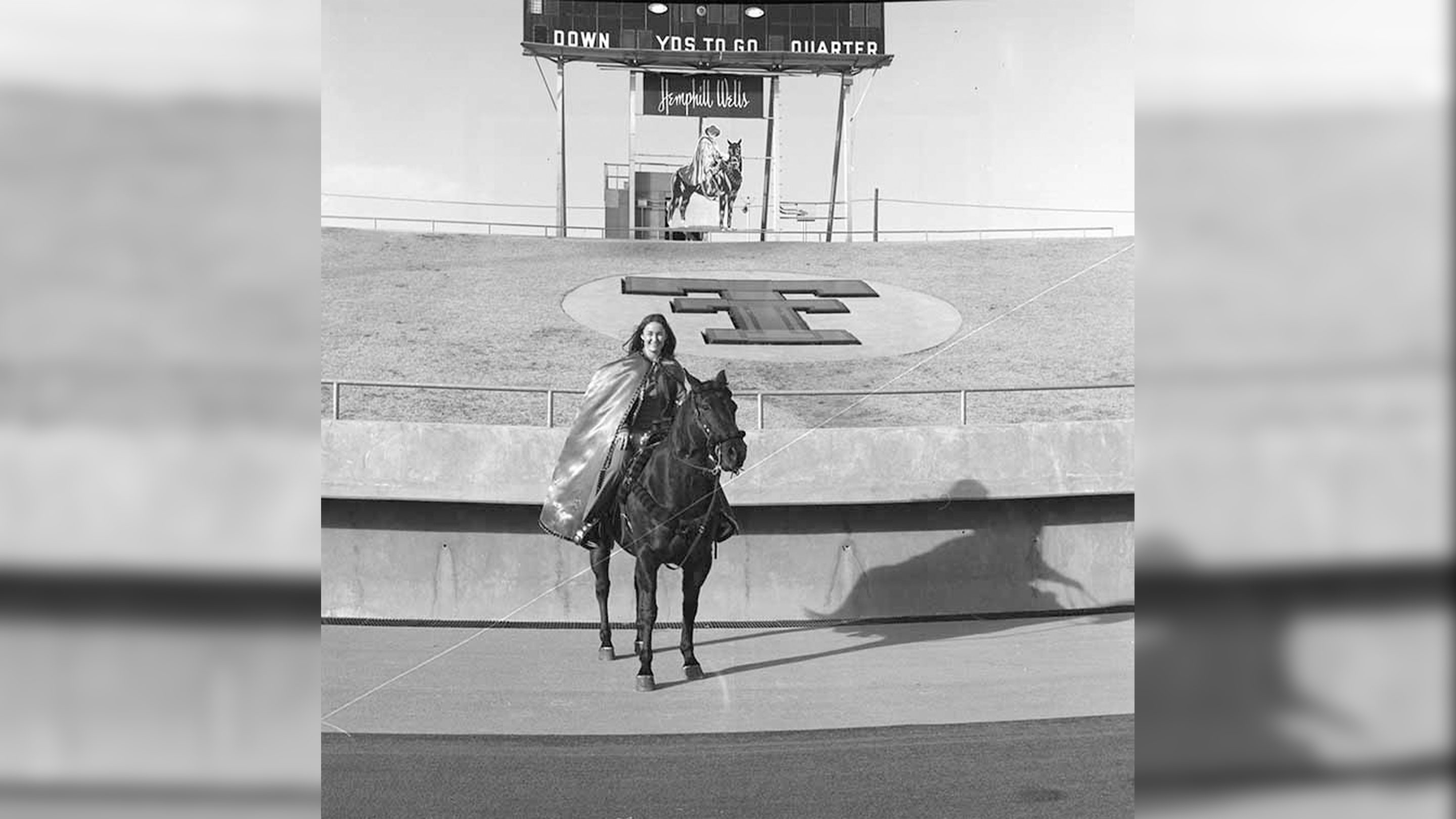
When the program began, a faculty member from what is now the Davis College of Agricultural & Natural Resources selected the rider, who would then serve a term of more than one year in the role. That ended in 1974. That year marked the first year a woman was chosen to become the Masked Rider, Anne Lynch.
Since Lynch’s selection, the process has become more involved requiring both a written and skills test followed by an interview. This process has been the standard ever since.
“There will be changes in how we select horses, how we select riders, the interaction with rider and public and horse,” Jackson added. “The program has changed significantly in 70 years, and it won’t stay the same.”
‘If you have gained the trust of a horse, you have won a friend for life.’ - Unknown
Loyalty requires a special dynamic between two parties. When people associate loyalty and protection with an animal, most would consider a dog as the top four-legged companion.
Spend a little time with former Masked Riders or any people who interacts with horses, and those thoughts about loyalty and protection might just shift.
“One of the best parts of being the Masked Rider is partnering with your horse, and it’s the hardest part to leave that relationship behind and pass it on to the next rider,” Caliva recalled.
Caliva would know firsthand about the relationship that develops between rider and horse. Her time as the Masked Rider was on the longest-tenured horse in program history, Midnight Matador. From 2002 until 2013 the jet-black steed was as reliable as they come.
“I was lucky enough to get to own him in retirement and give him a life of leisure,” Caliva said.
“You feel a lot of responsibility to take great care of that animal for so many people. And we just loved him so much. After all his service to Texas Tech it was one of the most rewarding experiences of my life.”
‘A horse gallops with his lungs, perseveres with his heart and wins with his character.’ – Federico Tesio
While it is the desire for any program associated with a university to have a problem free existence, it is impossible to predict or prevent accidents from happening.
One such scenario played out on Sept. 3, 1994. During a home football game for Texas Tech against the University of New Mexico, a game day incident involving an equipment problem lead to the death of one of the horses and change the face of the program moving forward.
The program found itself at a crossroads, and Jackson found himself in a position to help.
“They asked me to come on as someone who had horse experience and could assist with some of the safety aspects,” Jackson said. “I’ve been working with the program since then, basically coordinating the horse activities.”
Jackson is an associate professor in Davis College’s Department of Animal and Food Sciences. His commitment to the program goes way beyond those duties.
“I was a student here and my hope was to be the Masked Rider,” Jackson reminisced. “I was unable to because of other choices I made career-wise.
“I came to Texas Tech partially because the Masked Rider stayed at our house on the way to the Baylor game.”
On game day, fans and observers alike can typically catch a glimpse of Jackson on the sideline talking with the rider before their entrance during the pregame, all the way until the horse is loaded back into the trailer. It’s a unique opportunity for both Jackson and the rider to prepare for what has become a show-stopping entrance.
“It’s different for each rider,” Jackson stated. “I just help provide. I tell them ‘You’ve done everything right. You’re prepared to this point, and this is the opportunity you’ve worked yourself towards.’ I tell them to go out and experience something hardly anybody get the opportunity to do.”
A more intense checks-and-balances system was implemented after the 1994 accident, which has certainly changed everything about how both Jackson, Rhode and the rider approach each and every time out. Fortunately, throughout this enhanced approach, the program has never lost what has become so iconic over the course of seven decades; the ability to capture the minds and hearts of all who witness the Masked Rider.
“I’ve seen grown men cry,” Rhode recalled. “They’ll come up to me and talk about seeing it for the first time, bringing their grandsons, their sons and daughters to see it. It represents Texas Tech to them. It is the symbol of Texas Tech.”
‘No hour of life is wasted that is spent in the saddle.’ – Winston Churchill
Calculating the amount of time a rider devotes to the horse while in the program is almost impossible. The dedication and commitment must be there for trust to be established between the two.
“I think it is always amazing when our fans realize how much time these riders spend with the horse,” Rhode said. “They must form a bond with the horse. For a typical game day, it’s a 12-hour day for the rider.”
The trust goes beyond the field. The rider is expected to be a part of a myriad of events with people and objects that may seem normal to most. To a horse, however, it’s anything but normal. This means parades, school visits and any opportunity to connect with the public.
“I didn’t realize you go to car shows and elementary schools and I didn’t realize how much you get to travel with the horse in the trailer and how far you get to go and meet people outside of Lubbock,” Winter recalled.
For current rider Bloss, she has noticed as Centennial Champion progresses through the program, he’s gained a sense of comfort that might not have been there when he was introduced to the public in 2022.
“He becomes a laid-back horse once he’s out standing with the public,” Bloss said. “He knows his job so well. He knows once we get somewhere and we stand, he just gets to be loved on and have pictures taken.”
Appearances like these have increased exponentially in the last several years. A yearlong event such as the Centennial Celebration created even more opportunities for public appearances than in years past.
“The first student riders’ only obligation was the football games,” Jackson stated. “They made five or six home appearances. Maybe they went on the road a few times. Now these students who are the Masked Rider are making up to 400 appearances a year.”
This can be a substantial ask, but the job of the Masked Rider is a special one with a special horse.
Since receiving the reins from 61st Rider Caroline Hobbs on April 21, Bloss has made close to 200 appearances as the Masked Rider.
‘There is no secret so close as that between a rider and his horse.’ – R.S. Surtees
A dark horse with a rider donning a mask, hat and red cape racing down a football field is a stunning sight. This experience is not lost on the current or former Masked Riders either.
“I think it’s surreal when you have a transfer of reins and they put the mask, hat and cape on you,” Caliva smiled. “It becomes very real you’re in this position so many before you built up. A symbol we know today as one of, if not the greatest college mascot program in the country.”
During the 70th reunion, past riders were still in awe of the experience of being around the current horse and rider.
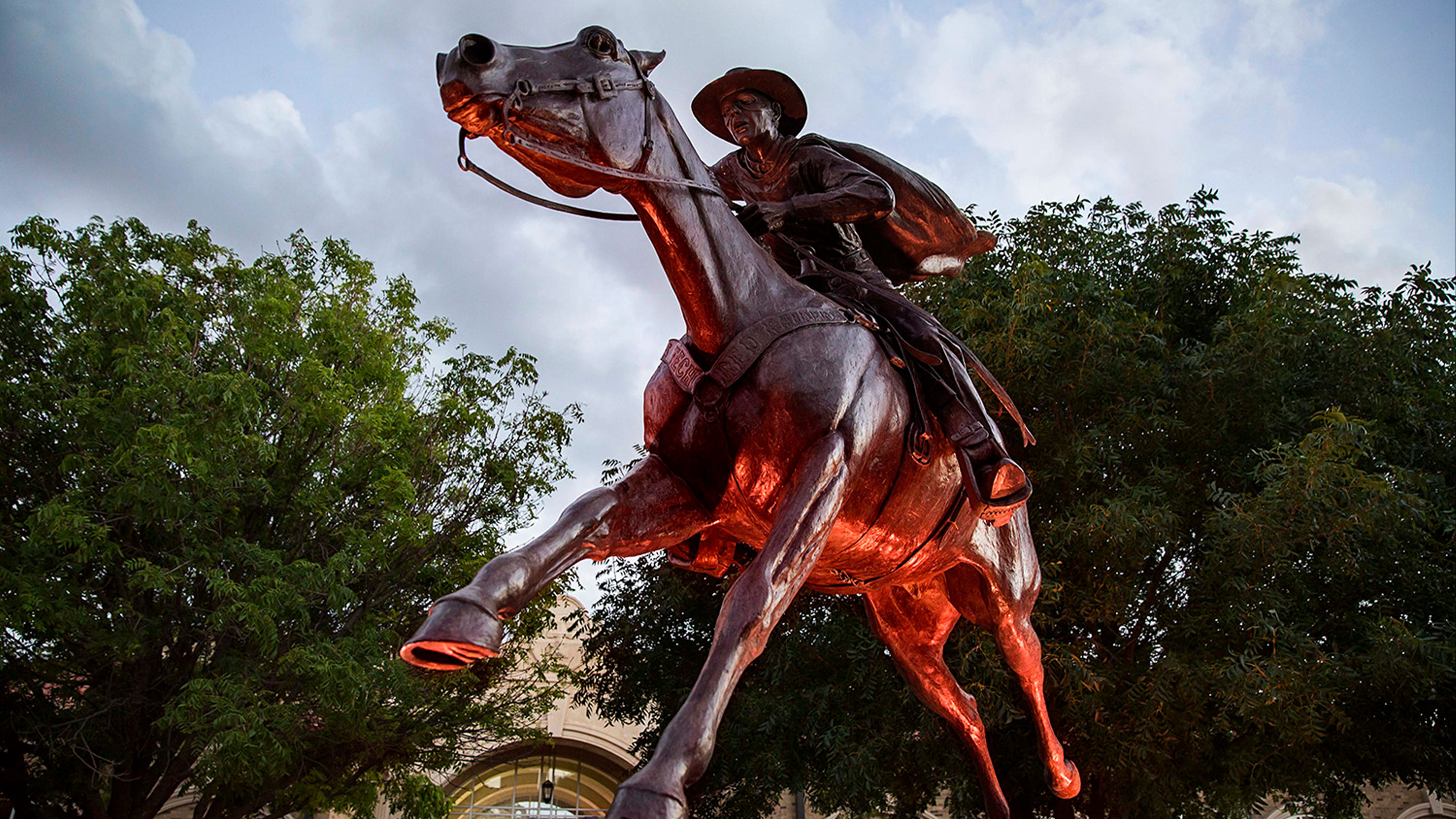
“Lyndi Starr (57th Masked Rider) and I were standing there waiting to take a picture by the Masked Rider statue and looked up to see the current rider, Lauren (Bloss), and were like, ‘Oh my gosh. Look, it’s the Masked Rider,’” Winters recalled. “We’ve been in those shoes. We’ve worn the cape, but you’re still just in awe of the position and the tradition.
“I think watching the rider, you have a whole different care for the human, the person behind it. I know how nervous she is and I know how excited she is.”
‘I can make a general in five minutes, but a good horse is hard to replace.’ – Abraham Lincoln
Over the course of time 15 horses have been part of the program. Horses like Charcoal Cody, Happy 5, Midnight Rider, Midnight Matador and Fearless Champion have helped facilitate the longevity of the program.
“We know we’re not just running down a football field,” Hobbs recalled. “We’re going to meet fans, going to baseball games, going to basketball games. We’re going to live events. We’re going to all of these different events for the community and surrounding areas that truly touch people’s lives.”
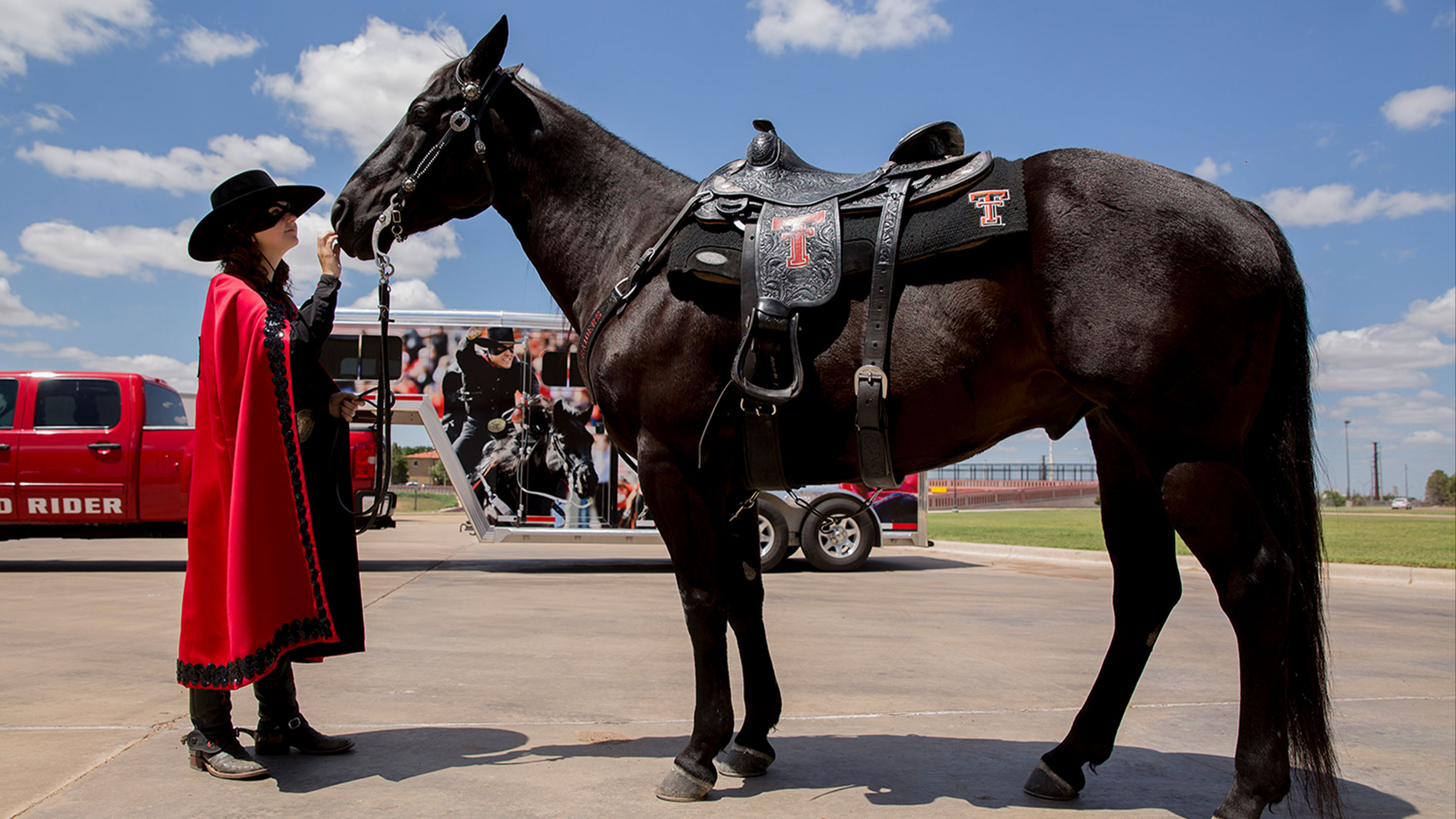
Touching lives, forming bonds and extending traditions have all become synonymous with the Masked Rider.
“If you go back historically, we didn’t even have a horse,” Jackson said. “We basically borrowed horses and used students’ horses. The program has evolved to where we are now with the scholarship support of the students. If you look at just the structural component of the program, it has changed significantly, really, in the last 30 years.”
Integrating technology, sponsorships, scholarships and partnerships have been key to growing this program and it will continue to be the case for the next 70 years.
“We look forward to improving and making this a long-term, sustainable program that really brings great honor and great visibility to the university,” Jackson beamed. “We’re in a good spot, but it will be better.”

